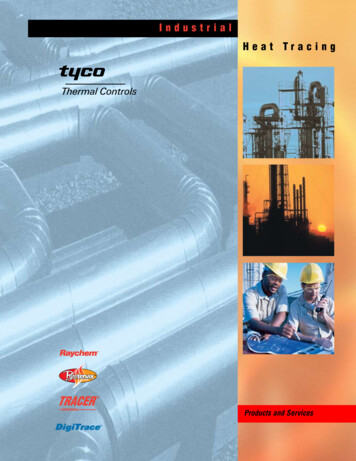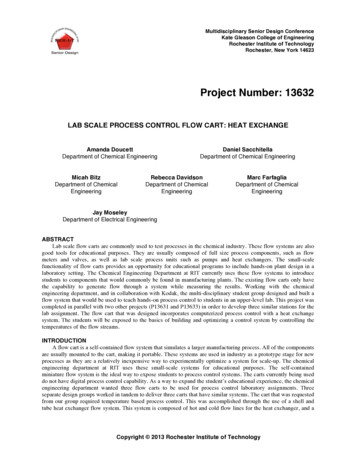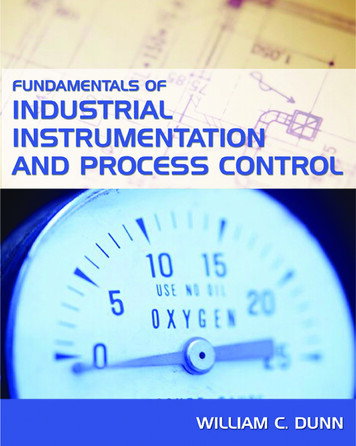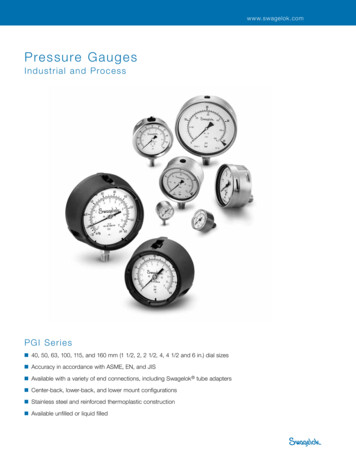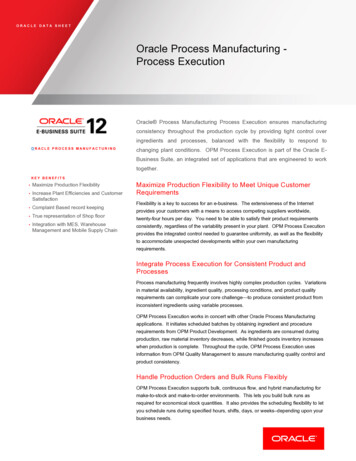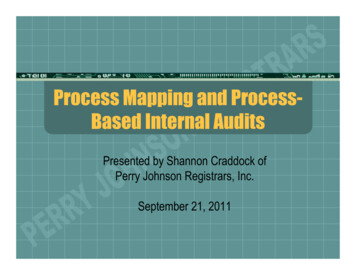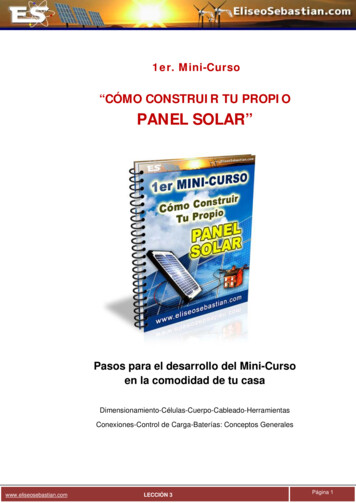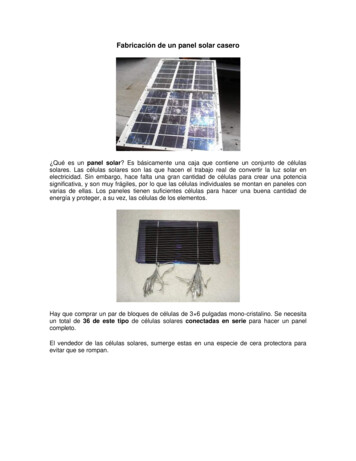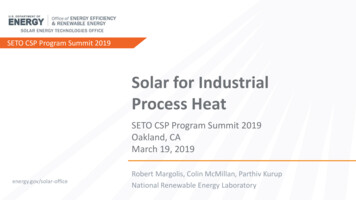
Transcription
SETO CSP Program Summit 2019Solar for IndustrialProcess HeatSETO CSP Program Summit 2019Oakland, CAMarch 19, 2019energy.gov/solar-officeSETO CSP Program Summit 2019Robert Margolis, Colin McMillan, Parthiv KurupNational Renewable Energy Laboratory
Overview The industrial sector accountsfor roughly 1/3rd of all U.S.primary energy use (32Quads). Industrial Process Heat (IPH)accounts for roughly 7.5Quads. IPH for manufacturing is 90% through fuels like NG What role can solartechnologies (CSP and PV) playin meeting a wide range of IPHend uses in the U.S.? Fuel saving Broader transformationSETO CSP Program Summit 2019U.S. energy use by sector (2016) withmanufacturing IPH estimate (2010)(Data from EIA 2017; U.S. DOE 2014)2
Industrial Processes Require a Wide-Range of Temps Industrial processes range fromthose requiring hot water at 70 Cto those melting steel scrap at1,800 C.Select industrial players could beprime targets for technologyadoption and demonstration.Significantdemand 600 C50% of demandbelow 300 SETO CSP Program Summit 2019Energy demand by process temperatureKurup and Turchi, “Initial Investigation into the (Source: McMillan and Ruth 2019)Potential of CSP Industrial Process Heat for theSouthwest United States”, NREL, 20153
Potential Solar IPH Configurations New Solar IPH marketscould open up as: the cost of solartechnologies (CSPand PV) declines the cost ofcomplementarytechnologies(storage, efficiency,electrification)declinesSolar technologiescould meet a broadrange of industrialprocess temperaturerequirements.SETO CSP Program Summit 2019Solar TechnologiesThermal flat plate, Nontracking compound, Solarpond, PV heat pump ormicrowaveParabolic trough, LinearFresnel, PV infraredHeliostat/central receiverPV InductionPV ResistancePV Electric arcTemp Range 80 C 550 C(depending on HTF)ApplicationsHot water,Space heating,Drying,CuringDrying and curingSteam for IPH 550 CSteam for IPH,Lime calcining 1,100 CHeat treating 1,700 C Steam for IPH(material dependent) Glass melting 4,000 CMetal meltingBased on data in: Chindris and Sumper (2012) and Cheremisinoff (1996).4
Defining Process Parity Process parity is the pointat which the levelized costof heat (LCOH) from solaris equivalent to thelevelized cost of heat fromother sources, e.g. fuel Estimating process parityrequires expandingdatasets and carrying outdetailed process levelmodeling.SETO CSP Program Summit cessheating unitoperationsIndustrialenergyefficiencymeasures5
Where Potential Meets Demand Locations of food processing across Californiawith solar-thermal energy potentialUse the NREL System Advisor Model (SAM) andother analysis tools, to model systems (e.g. solarIPH) and determine locations with good potentialSETO CSP Program Summit 2019 Central Valley provides goodresource and industry proximityIndustries such as Fruit and Vegclustered together in goodthermal potential areas and withnearby available landSource: Kurup and Turchi, “Initial Investigation into the Potential of CSPIndustrial Process Heat for the Southwest United States”, NREL, 20156
Example: Energy Profile of Brewing in the U.S. Beverage sector Thermal demands bytemperatureSt. Louis, MO 43 TBtu for boiler andprocess heat 84% natural gas Energy data from: McMillan and Narwade (2018): United States County-Level Industrial Energy Use. NationalRenewable Energy Laboratory. https://dx.doi.org/10.7799/1481899 :SETO CSP Program Summit 2019Washing (70 C)Cooking (100 C)Mashing (70 C)Brewing (100 C)Drying (100 C)Pasteurizing (65 C)Source: U.S. EIA. 2018. 2014Manufacturing EnergyConsumption Survey; and,Brown, et al. Energy Analysis of108 Industrial Processes. PrenticeHall, 1997.7
Characteristics of Brewery Process Heat Demand Brewery temperature requirements are well-matched to solar technologies Solar thermal is already being used in the U.S., Germany and other countries Breweries have standard production processes (e.g. mash boiling), but areoperated differently and at range of scales Opportunities also exist for waste heat recovery (e.g., from boiler fluegases and steam re-condensation), but timing of hot and cold streamsneeds matching Thermal energy storage (TES) is critical for reducing heat demandEiholzer, et al. “Integration of a Solar Thermal System in a Medium-Sized Brewery Using Pinch Analysis: Methodology andCase Study.” Applied Thermal Engineering 113 (February 25, 2017): .2016.09.124.SETO CSP Program Summit 20198
Brewing with Solar Thermal PreheatingStandard Brewing Unit ProcessesSETO CSP Program Summit 2019Solar Thermal PreheatingSource: Lauterbach et al. 2014. System analysis of a low-temperature solarprocess heat system. Solar Energy. 10.1016/j.solener.2013.12.0149
Conclusions With the emergence of lower-cost solar technologies, it is important todevelop data and analysis that enable decision makers and analysts toexplore how IPH might shift toward renewable sources over the comingdecades. Industrial process heat represents a significant potential market for solar,roughly 7.5 Quads in the U.S. A mix of solar technologies (CSP and PV) could be used to meet a broad rangeof industrial process temperature requirements. Two potential Solar IPH strategies:1. As an add-on to existing processes to provide fuel savings2. As part of a broader process modification strategy to drastically reduce fueluse (linked with storage, efficiency, electrification, etc.)SETO CSP Program Summit 201910
Use the NREL System Advisor Model (SAM) and other analysis tools, to model systems (e.g. solar IPH) and determine locations with good potential. SETO CSP Program Summit 2019. Example: Energy Profile of Brewing in the U.S. 7



